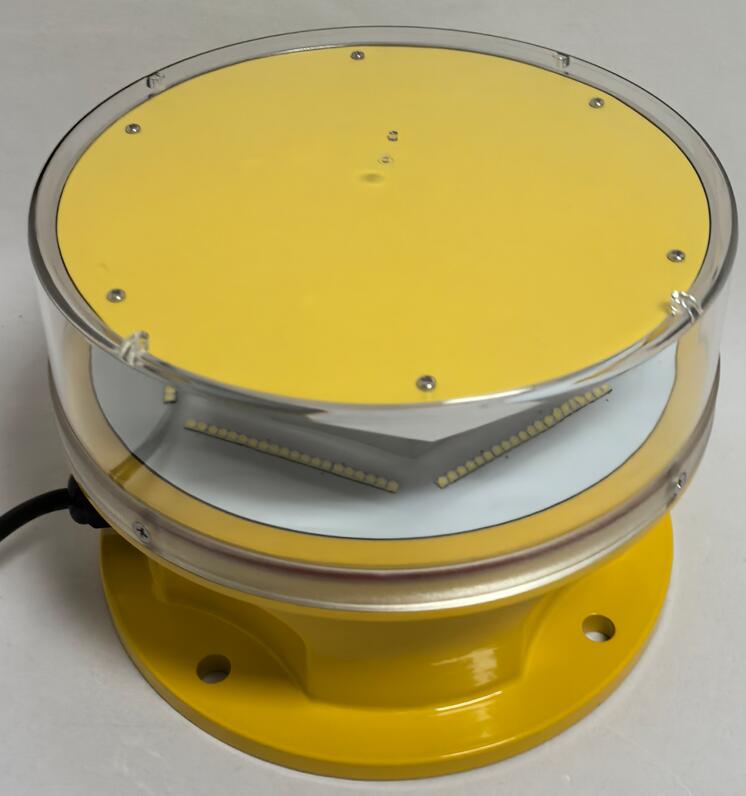FAA Approved Obstruction Lights: The Gold Standard in Aviation Safety
In the complex world of aviation safety, FAA approved obstruction lights serve as a critical safeguard against potential collisions between aircraft and man-made structures. These specialized lighting systems meet stringent Federal Aviation Administration (FAA) regulations, ensuring maximum visibility for pilots navigating through low-visibility conditions or nighttime operations. This article explores why FAA certification matters, the different types of compliant lighting systems, key regulations, and how technological advancements are shaping the future of obstruction lighting.
Why FAA Approval Matters
The FAA sets rigorous standards for obstruction lighting to maintain uniformity and reliability across U.S. airspace. Structures exceeding certain heights—such as communication towers, wind turbines, and skyscrapers—must use FAA approved obstruction lights to:
Prevent mid-air collisions by making obstacles clearly visible.
Ensure compliance with federal aviation laws, avoiding legal penalties.

Enhance pilot situational awareness, especially in poor weather or darkness.
Non-compliant lighting systems risk failing when needed most, potentially leading to catastrophic accidents.
Types of FAA Approved Obstruction Lights
The FAA categorizes obstruction lights based on structure height and location. The main types include:
| faa approved obstruction lights |
1. L-810 (Low-Intensity Red Lights)
Used for structures under 150 feet (45 meters).
Steady-burning or flashing red LEDs.
Common on buildings near airports where high-intensity lighting is unnecessary.
2. L-864 (Medium-Intensity White Strobe Lights)
Designed for structures between 150–500 feet (45–150 meters).
High-visibility white strobes with specific flash patterns.
Often installed on telecom towers and urban high-rises.
3. L-865 (High-Intensity White Strobe Lights)
Required for structures exceeding 500 feet (150 meters).
| faa approved obstruction light |
Ultra-bright strobes visible from long distances.
Used on skyscrapers, broadcast antennas, and offshore platforms.
4. Dual Lighting Systems (L-864/L-865 Combination)
Combines medium and high-intensity lights for optimal visibility.
Red lights may be used at lower levels, while white strobes mark the highest points.
Key FAA Regulations for Obstruction Lighting
The FAA’s AC 70/7460-1L advisory circular outlines strict requirements, including:
Light intensity & color (red, white, or dual systems).
Flash rates & synchronization (to avoid confusion with other aviation lights).
Placement & spacing (ensuring 360-degree visibility).
Power supply reliability (backup systems for critical installations).
Structures failing to meet these standards may face enforcement actions, including fines or mandated modifications.
Technological Advancements in FAA Compliant Systems
Modern FAA approved obstruction lights leverage cutting-edge innovations for better performance:
1. LED Dominance
Replaced outdated incandescent and halogen bulbs.
Benefits: Longer lifespan, lower energy use, brighter output.
2. Solar-Powered Solutions
Ideal for remote towers without grid access.
Self-sustaining with battery backups for uninterrupted operation.
3. Smart Monitoring & IoT Integration
Real-time fault detection via wireless sensors.
Remote diagnostics reduce maintenance costs and downtime.
4. Adaptive Lighting Systems
Automatically adjust brightness based on ambient conditions (fog, rain, etc.).
Enhances visibility while conserving energy.
Challenges & Future Trends
While FAA approved obstruction lights significantly improve safety, challenges remain:
Light Pollution – Balancing brightness with dark-sky preservation efforts.
Wildlife Impact – Minimizing disorientation for birds and bats.
Maintenance Logistics – Inspecting lights on ultra-tall structures can be complex.
Future developments may include:
AI-Powered Predictive Maintenance – Anticipating failures before they occur.
Drone-Assisted Inspections – Reducing risks for maintenance crews.
Advanced Coating Materials – Improving durability against harsh weather.
FAA approved obstruction lights are indispensable for aviation safety, providing pilots with critical visual cues to avoid collisions with tall structures. With evolving LED technology, smart monitoring, and sustainable power solutions, these systems are becoming more efficient and reliable than ever.
As urban landscapes continue to grow vertically and air traffic increases, adherence to FAA lighting standards will remain paramount. By embracing innovation while maintaining strict compliance, the aviation and construction industries can ensure safer skies for generations to come.
